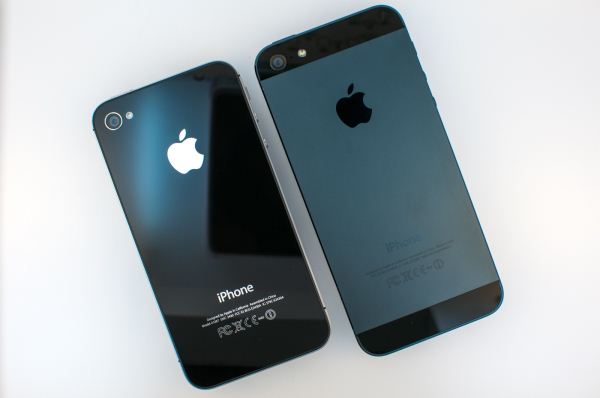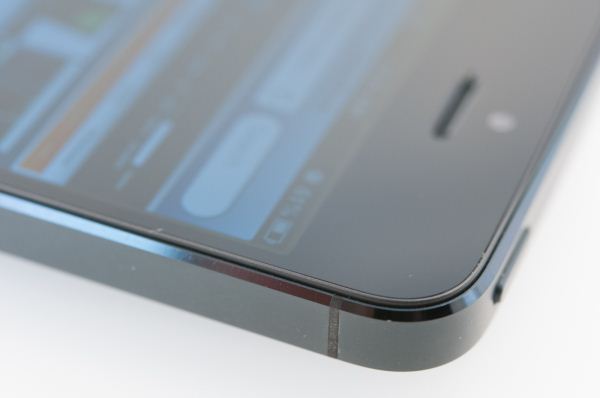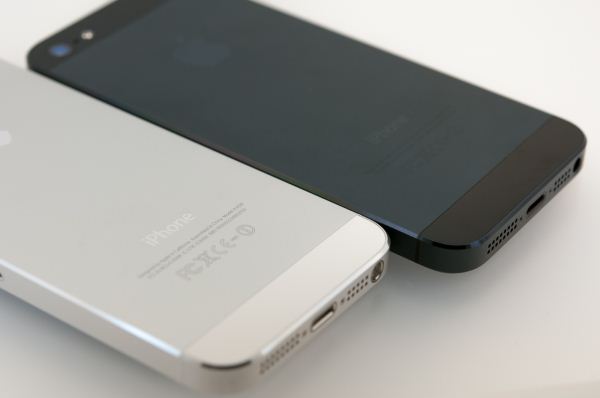The iPhone 5 Review
by Anand Lal Shimpi, Brian Klug & Vivek Gowri on October 16, 2012 11:33 AM EST- Posted in
- Smartphones
- Apple
- Mobile
- iPhone 5
Design
Section by Vivek Gowri
The iPhone 4, when it launched, represented a clean break for Apple's industrial design. It replaced the soft organic curvature of the iPhone 3G/3GS with a detailed sandwich of metal and glass, something that arguably brought the feel of a premium device to a new level. Obviously, Apple had their fair share of issues with the design initially, and nothing could match the sinking feeling of dropping one and shattering the glass on the front and back simultaneously, but it was a small price to pay for the jewel-like feel of the device. Combined with the (at the time) incredible pixel density of the then-new Retina Display, the iPhone 4 was a revolution in hardware design. The chassis has aged remarkably well over the last two-plus years, so naturally it's a hard act to follow.
The 5 keeps a similar design language to the 4, keeping roughly the same shape as before but with a taller and thinner form factor. At first glance, the 5 actually looks almost the same as the 4, with an unbroken glass front face, prominent corner radiuses, the familiar home button, a rectangular cross-section, and metallic sides with plastic antenna bands. However, those metallic sides are part of an anodized aluminum frame that makes up a majority of the body, and that's where the industrial design diverges from the 4 and 4S.
In contrast to the predominantly glass body of the previous generation iPhone, the 5 is almost entirely aluminum other than the glass front face and two small glass windows at the top and bottom of the back. It's a return to the original iPhone/3G/3GS-style of construction, with the front glass clipping into a unibody chassis. It's a significant departure from the 4 and 4S, where the stainless steel band in the center was the main housing that the front and rear panels clipped into. That was pretty radical way of doing things, so it's not all that surprising to see Apple revert to a more conventional and less complex method for the 5.
The aesthetic is actually pretty awesome, especially in the black version. The combination of black glass and off-black aluminum (Apple is calling it slate) gives the 5 an almost murdered out look that's three parts elegant and one part evil. The white and silver model has a classy look that's much friendlier in appearance than the black one. The color schemes and overall design aesthetic remind me of the Dell Adamo, one of my favorite notebook designs of all time. The similarities may be purely coincidental, but it's interesting to note nonetheless and should give you an idea of how premium the industrial design is.
All three previous iPhone body styles had very similar dimensions, so the biggest question with the 5 was how much the larger display would do to change that. Unlike many Android manufacturers, Apple still believes in things like small pockets, small hands, and one-handed smartphone usage. With the 5 being vertically stretched but no wider than the previous iPhones, the biggest impact on in-hand feel is actually the thinner body. If you're used to a larger Android or Windows device, the change seems radical, but even compared to the 22% thicker iPhone 4S, it feels a good deal smaller.
It's not just the minimized z-height though, the 25% weight loss is definitely also a factor. Even a few weeks later, I still find it striking how much less substantial it feels than the 4 and 4S. The densely-packed glass body just had a reassuring weight to it that the 5 simply lacks. But as you get used to the new form factor, you realize how far Apple is pushing the boundaries of ultrathin design. When the 4th generation iPod touch came out, I told Brian that I wanted an iPhone with that form factor - well, the 5 is essentially there (0.3mm thicker and 11 grams heavier, but close enough). It's pretty impressive to think about. If you thought the 4S was one of the best phone designs on the market in terms of aesthetics and build quality, the iPhone 5 just pushes that advantage further.



















276 Comments
View All Comments
grkhetan - Wednesday, October 17, 2012 - link
You dont "need iTunes" per se to use the iPhone any more. However, it is required if you sync music. However, I use iTunes Match -- so I dont need to use iTunes sync for anything... However I need to use iTunes to upload my music to the iTunes Match servers but thats it. I am happy to say with iCloud and iTunes Match -- "syncing" my iPhone is something that is no longer required at all.Touche - Wednesday, October 17, 2012 - link
One doesn't need iTunes, except one does...however, you don't, however you need it...but happily, you don't require it at all, except you do.Hmm...
grkhetan - Wednesday, October 17, 2012 - link
Touche, iTunes is not required to use the phone if you dont need music/videos using the default player. (You could play them from streaming services like Spotify/Pandora, etc or store it in dropbox).But if you need to play music using the default music player -- you need to use iTunes to sync the music over. BUT if you use iTunes Match, then you dont need to use "iTunes sync", but you need iTunes to upload the music to iTunes Match servers. This itself is not painful at all in my opinion -- the main burden with iTunes was the "sync"
phillyry - Sunday, October 21, 2012 - link
I'm sorry but I'm going to have to agree with Touché here.Please don't backtrack/double back to justify the fact that you do in fact need iTunes on an iPhone and need to sync it. Wired or wireless it's still a sync - it just goes through iCloud when done wirelessly.
Lets not confound the matters of whether the use of an iPhone is pleasant or not with whether you need to use the generally unpleasant iTunes sync. Apple's lockdown on sync methods sucks for the users freedom of access to their own device but, despite that, the device is still great to use.
ThreeDee912 - Wednesday, October 17, 2012 - link
Basically, if you want to put your own media on your iPhone, you'll need iTunes to sync or upload with iTunes Match.You can do everything else on the phone itself.
darkcrayon - Wednesday, October 17, 2012 - link
No, you don't need iTunes to put media on your iPhone. You do need it to put media in the stock Music or Videos app. If you don't want to use those there are many apps that let you supply your own music via wifi copy to the iPhone or by downloading them directly from the web if you have such a source.I don't have any issue with iTunes though so I just use that.
steven75 - Wednesday, October 17, 2012 - link
Funny, I know people who have switched the other way and are hugely relieved to be free of the bloatware, nervous anticipation of "will my phone ever get updated?", and crappy plastic hardware.In summary, anecdotes are fun and enjoy what ya got.
KPOM - Thursday, October 18, 2012 - link
Don't let the door hit you on the way out. Also, don't complain when Samsung decides your phone is "too old" for the latest update. I resisted the iPhone as long as I could. I even had a Nexus One for over 18 months. But once Google decided that its former flagship, which was released 6 months after the iPhone 3GS, was 'too old" to get any OS after Gingerbread (which it got about 3 months after Gingerbread devices came out) I decided I could no longer put up with Google's tactics. Plus, it's nice no longer giving away all my personal information to Google just for the privilege of using their bloated copycat OS.Spunjji - Friday, October 19, 2012 - link
No. Now you're giving it to Apple for the privelege of using their bloated copycat OS instead.Seriously, I was following you write up until your final crock-of-shit statement. All smartphone operating systems use your data, and they all borrow from each other.
Leyawiin - Wednesday, October 17, 2012 - link
"POOF!"Hate the commercials, but that guy makes me laugh.